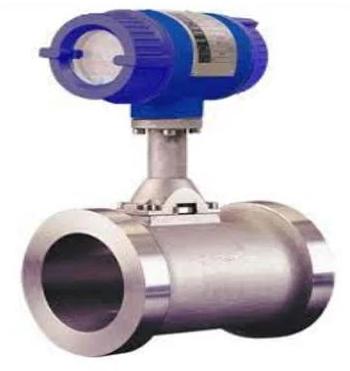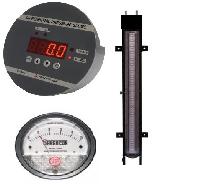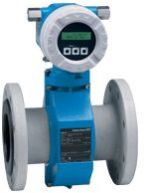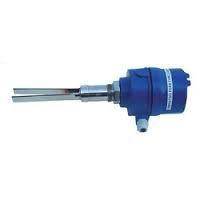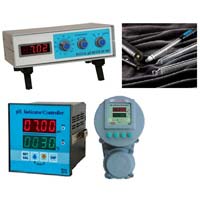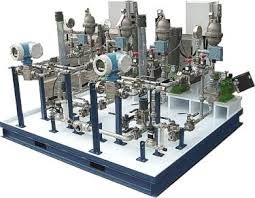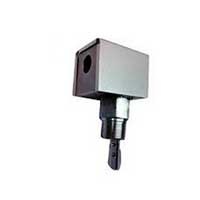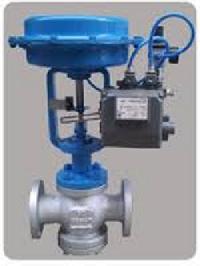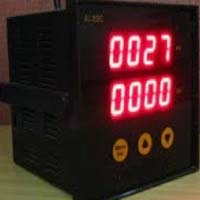| Business Type | Manufacturer, Exporter, Supplier |
| Material | Mild Steel |
| Finishing | Powder Coated |
| Driven Type | Electric |
| Click to view more | |
Product Details
Vortex Flow Meter: Reliable Measurement for Various Fluids
The vortex flow meter is a versatile instrument used to measure the volumetric flow rate of fluids within a pipeline. It operates based on the principle of vortex shedding, making it suitable for a wide range of liquids, gases, and even steam. Here's a breakdown of the product description and key specifications to consider when selecting a vortex flow meter:
Product Description:
Vortex flow meters utilize a bluff body (a shedder) strategically placed within the flow stream. As the fluid flows past the bluff body, vortices ( swirling patterns) are shed alternately from either side. The frequency of vortex shedding is directly proportional to the flow velocity. The meter's sensor, typically piezoelectric or ultrasonic, detects these pressure fluctuations caused by the vortices. The meter's electronics then convert the vortex shedding frequency into a flow rate measurement.
Benefits of Vortex Flow Meters:
· Wide range of applications: Capable of measuring flow rates for various fluids, including liquids, gases, and steam (with proper conditioning).
· No moving parts: Offers reliable operation with minimal maintenance requirements due to the absence of moving parts.
· Good accuracy: Can achieve accuracy of ±0.5% to ±2% of reading under ideal conditions.
· Low pressure drop: The shedder creates minimal obstruction within the pipe, resulting in low pressure drop across the meter.
· Wide flow rate range: Can handle a broad spectrum of flow rates, making them adaptable to diverse applications.
Specifications to Consider When Selecting a Vortex Flow Meter:
· Flow Meter Type: Vortex flow meters come in various configurations, each with slight performance variations. Common types include:
o Standard Vortex Flow Meter: The most common type, suitable for clean liquids and gases.
o Split Body Vortex Flow Meter: Easier to install/remove from existing pipelines without interrupting flow.
o Low Flow Vortex Flow Meter: Designed for measuring lower flow rates with good accuracy.
· Pipe Size: The diameter of the pipe the meter is designed for (e.g., 1 inch, 4 inch, etc.). Ensure it matches your pipeline diameter.
· Flow Rate Range: Select a meter with a range that comfortably covers your anticipated flow rates for the chosen fluid type.
· Accuracy: Consider the required accuracy level for your application.
· Pressure Rating: The maximum pressure the meter can withstand without failure. Ensure it meets the operating pressure in your system.
· Temperature Rating: The range of temperatures the meter can function within without compromising performance. Consider both ambient and fluid temperatures.
· Material Compatibility: The meter's body and wetted materials should be compatible with the fluid type to avoid corrosion or measurement issues. Common materials include stainless steel, exotic alloys, and various plastics depending on the application.
· Output Signal: The electrical signal the meter generates to represent the flow rate. Common options include:
o Pulse output: Generates a pulse for each unit of volume or vortex shedding event. The pulse frequency is proportional to the flow rate.
o Analog output: Provides a 4-20mA current loop or 0-10V voltage signal representing the flow rate.
Additional Features (Optional):
· Temperature Sensor: Improves accuracy by compensating for the effect of temperature on fluid viscosity, which can influence vortex shedding.
· Remote Electronics: Enables mounting the meter's electronics away from the pipeline in harsh environments or for easier access.
· Communication Protocols (Optional): Some advanced models offer communication protocols (e.g., Modbus) for remote monitoring and configuration.
Applications of Vortex Flow Meters:
· Water and Wastewater Treatment: Monitoring flow rates of water, effluent, and chemical solutions.
· Chemical and Process Industries: Measuring flow rates of various chemicals, gases, and light hydrocarbons.
· Oil and Gas Production: Monitoring flow rates of crude oil, refined products, and natural gas (with proper conditioning).
· Power Generation: Measuring steam flow rates, compressed air, and other critical fluids.
· HVAC Systems: Monitoring chilled water flow rates and air flow for building temperature control
Looking for "Sa Vortx and Steam Flow Meter" ?
Explore More Products


